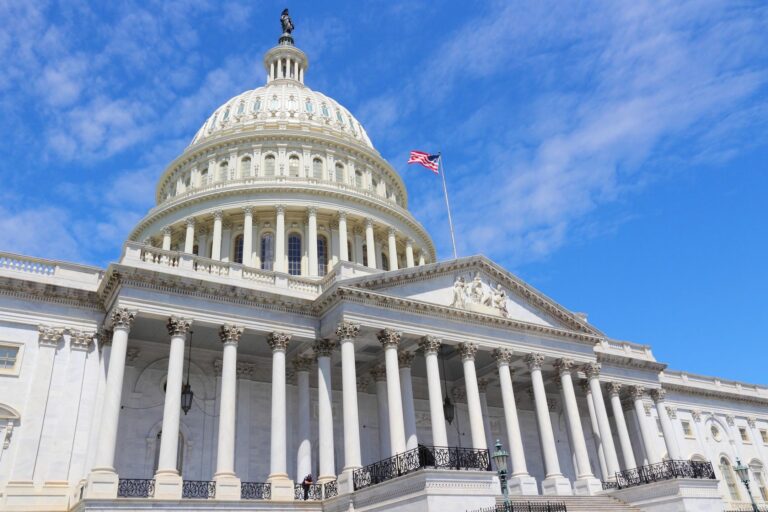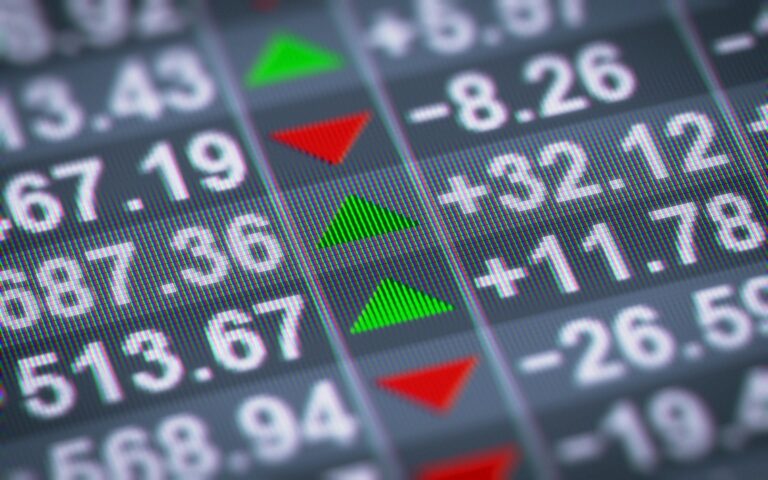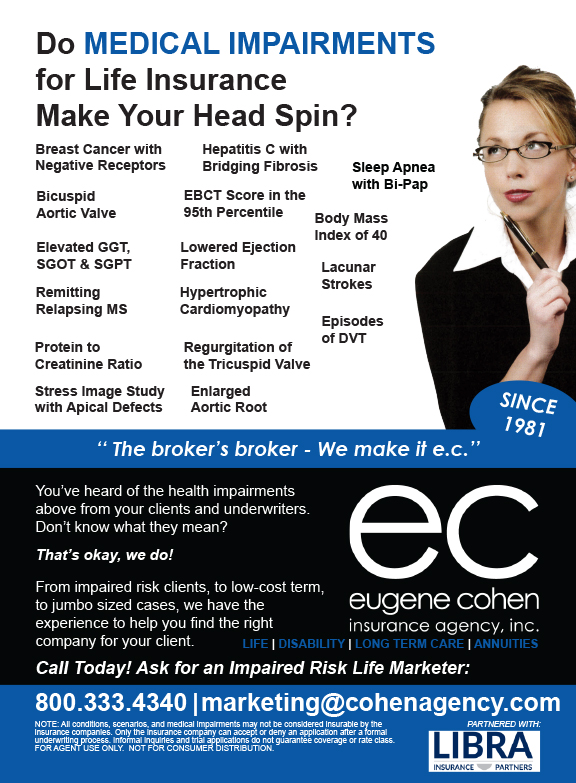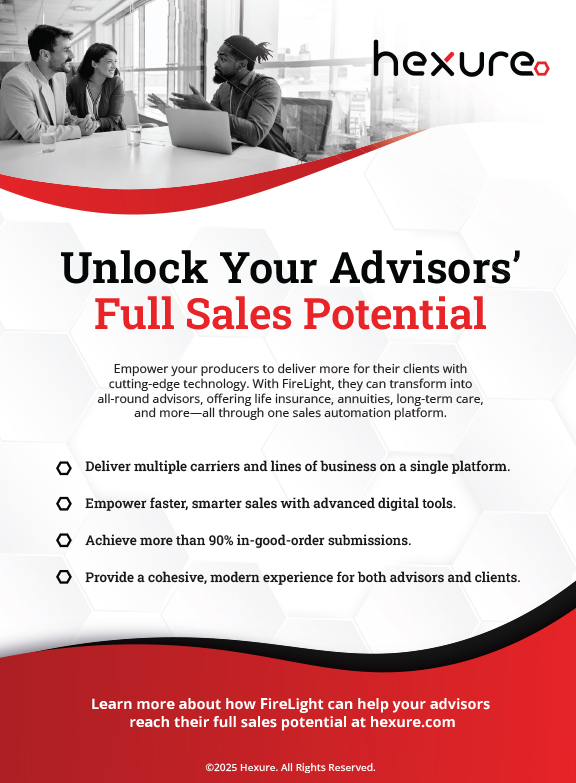A little over a year and a half ago I decided to leave corporate America to start a full-service independent marketing organization (IMO), CG Financial Group, LLC. This was a great process for me, not only because it allowed me to create a business that is already successful, but also because it allowed me to go through the process that I am now educating financial professionals on. That process is creating a “21st Century Agency.” I think you would agree that a 21st Century Agency is one that leverages consumer behaviors, social media, video, websites, search engines, etc.
Given that there are many parallels between what I have done (and am doing) and what a large chunk of the Broker World readership has done and/or is doing, I thought I would touch on the high-level process that I went through and what I coach insurance agencies on. Whether one is brand new to our industry or a veteran looking to optimize his/her practice, the below may be useful from a practice management and marketing standpoint.
Following is a very high-level version of our “Six-Step Roadmap” that we use to help new agents, as well as seasoned veterans, build out their business in an age where brands matter, expertise matters, and a web presence matters.
1.Create a name for your company. As you create your name, think about what it will be that will attract people to your company. For instance, when I started my company, I surveyed a lot of friends in the industry about what they think would attract people to my company. Many of them said, “You and your expertise and your ability to explain complicated topics in a simple manner.” So, I took their word for it and created the name “CG Financial Group, LLC.” CG of course being my initials. I also included the motto of “Simplifying Financial Security.”
Once you think of a name for your company or a “Doing Business As” (DBA), make sure you check the secretary of state’s website in your state to make sure it is not taken.
Most important of all of this, create a name that speaks to the value you will bring in the eyes of your prospects!
2. LLC and/or EIN. Whether or not to file for an LLC, S-Corp, etc., or get an employer identification number, is beyond the scope of this article, but if you go this route speak with an attorney or look online for companies like “Legal Zoom.” If you go the website route, make sure you are very much on top of all the business rules so you do it correctly!
3. Create a logo. I have studied human behavior, the brain, and behavioral finance a lot and I believe that every business should have a logo. They say that when you communicate with people, that 55 percent is body language, 38 percent is the tone of voice, and only seven percent is the actual words. In other words, the 55 percent that is body language tells me that people are visual! I know, it’s not breaking news that people are visual. A logo appeals to consumers’ visual tendencies and works like a tattoo in the brain. That “tattoo” can be a positive one if their experience with your company was good, or a negative one if the experience was bad.
My tips on the logo are: a) There are great logo apps online, just google “creating a logo” and you will see many; b) Make sure the logo is unique; c) Make sure it speaks to what you do; and, d) I do not believe a logo has to be fully descriptive. A logo can also generate questions like, “What does your logo mean?” That gives you an opportunity to explain what you do!
4. Create a Facebook Business page. This allows folks to “follow” my page and get my business’ content that appears in their feed whenever I post it to my Facebook page. I call it “passive aggressive marketing.”
Example: Let’s say that I just built out my Facebook Business page with a bunch of great articles and visuals. Maybe I included some facts about life insurance, annuity rates, the life insurance need, as well as a life quote engine, etc.
Well, just starting a “page” does not get followers. This is when I go to my “Personal” Facebook page and share with my 1,000 “Friends” that I have a Facebook Business page and that they should “Like” my business page in order to see ongoing updates and subject matter expertise. Once they “Like” my page, again, they will now see my ongoing material in their feeds. That is what I call “Passive Aggressive Marketing” and eventually, if your material is good enough, you will have family and friends inquire about various topics you have posted to your Facebook Business page. This cost you $0!
Furthermore, with Facebook Business I have the ability to target consumers in certain areas that have certain interests as well as certain “life events.” This costs money but can be very cost effective if done correctly.
Note: Instagram and LinkedIn are also great social media outlets one should utilize!
5. Website. I believe that having a website today is equivalent to what having basic prospecting conversations was 20 years ago. Conversations take place online in the 21st Century, whether you are technically “conversing” or not. Your website allows you to have “conversations” with prospects as you sleep. Work with an IMO that will provide you with material for a powerful website. Alternatively, you could also consider hiring a professional website designer such as Hooked Marketing to help you create your website.
Furthermore, now that you have set up your Facebook Business page, you are able to direct those Facebook followers to your website. But again, your website has to have compelling information and subject matter expertise so you are not wasting the prospects’ time. Generating this material is where you can leverage your IMO. In the end, the goal is to have your social media pages feeding your website and vice versa. The goal is to create a never-ending lead producing cycle. Also, if you are looking for service providers in web design melbourne or nearby places, you could consider taking the help of companies like Cultivate Digital.
A few key components a website should have:
- Messaging about why you are different. Why should they choose you versus your competition?
- Subject Matter Expertise! I believe that because of the internet, today’s consumer is better informed than an agent was in 1990. Therefore, you better be educating them on something they cannot get by researching your competitor’s website. Leverage your IMO for this material.
- Your site should have more of a discussion about the issues and potential solutions versus “products.”
- Your site should have a Blog! Blogs are posts/updates/commentary that are posted to your website and automatically emailed to those that have subscribed. A blog is especially important because it allows you to speak in a more casual tone than the verbiage on the main page of your website. This allows the prospects to better connect with you, the human being behind the business. It also allows you to show them that you know your stuff and are much more than somebody wanting to sell them something. If your material is good enough, the people visiting your site and reading your blog will share with others and you will have many “subscribers” that will now get your blog posts once you hit “publish.”
Most importantly, blogs help with “Search Engine Optimization” that I discuss in a moment. For instance, if you write a blog about long term care solutions and that blog mentions “long term care” six times, that will help your website appear closer to the top when a prospect in your area googles “Long Term Care Insurance.”
6. Search Engine Optimization: When I started CG Financial Group, I followed these six steps. Of course, that means I almost immediately created CGFinancialGroupLLC.com, the website. I also “optimized” it for search engines.
One of the items at the time that I put on my website was a reference to a sales tool that I had that independent agents could utilize as they sold indexed annuities and indexed life insurance. The sales tool was provided by a third party. This third party and I had an agreement that I could market this tool to the CG Financial Group agents.
So, fast-forwarding to about six months, all of a sudden, I started getting phone calls from agents that I had never spoken to in my life. These agents were asking me how to pay for their subscription for the tool, how to make adjustments on the account, some of them how to cancel their accounts, etc. They believed that I was the entity that was actually behind this particular sales tool! I was merely an IMO that distributed their product.
Well, after about the fifth call I started to ask questions about how they got my information and why they believed that I was the same entity. What was their response? They all said that when they “googled” the name of the sales tool, my website was at the very top and therefore they assumed that I was the same company as the sales tool provider. If that is not a testament to the importance of “search engine optimization” or “SEO services” I don’t know what is!
Clearly, there are many more steps to creating an agency for the 21st Century than these, but one needs to walk before he can run and I believe the above are table stakes in order to have a “21st Century Agency.”







































The Absent Insurance Agent My Family Needed Forty Years Ago
This is a repeat of a column I wrote for the December 2018 issue. In today’s environment, where financial professionals are having to adopt new methods, I feel this is a timely repeat. One constant in our business should always be to tell your story!
I was never going to write on this topic until today when I had a conversation with Joe Jordan. Some of you may know Joe, who has written the bestselling book “Living a Life of Significance.” Joe is also a globally sought after speaker on the value of what we do in the insurance business. Joe is a good friend of mine. In his speeches, and his book, he speaks of a personal experience reminiscent of the one that I had been hesitant to write about.
In my conversation with Joe I told him what I was thinking of writing about and my hesitation because of its personal nature. Here was Joe’s response:
“Charlie, this is the problem with our industry! Our industry relishes the analytics, product specs, mortality tables, tax law data and all of that other technical BS. We need to change. I know you are probably thinking you shouldn’t write about it because of a couple different reasons: First, that it’s not professional to write about one’s personal life; and second, that you fear people may think you are looking for sympathy. Well it is these personal stories that we need to tell more of in this business. This is where we are missing the boat!”
So, here we go…
I was born in Atlantic, Iowa (Southwest Iowa), a town of about 7,000 people. I grew up in a blue collar family and have a brother that is two years younger than me.
Growing up we had two opposing forces in our household, my mom and my dad. My mom was the one that made sure we got decent grades in school, had nice clothes, brushed our teeth in the morning and night, and stayed out of trouble. My dad, on the other hand, didn’t care about our grades or what clothes we wore, didn’t care if we brushed our teeth, and rarely disciplined us. My mom and dad were a good mixture for us kids because my mom kept us in line and my dad was my brother’s and my best friend growing up. My dad took us hunting and fishing since we were toddlers, taught us to ride motorcycles, bought us video games, and all of the other things that boys like to do. My mom made us take care of ourselves and our dad taught us how to have fun. My mom jokes to this day that we always thought she was the “mean one,” which is true. This dynamic made for a great childhood for us kids but not a great marriage between those two. Hence their eventual divorce.
My mom and dad parted ways when I was 12 and my brother was 10. Even though my mom won the custody battle, and rightfully so, my dad would religiously take us every other weekend. He looked forward to it as much as we did.
The fact that my dad loved us kids so much and doted on us was surprising to those who knew my dad. The reason being, my dad was an intimidating personality and an intimidating figure. For those on the outside they may have viewed my dad as not caring about anybody.
My dad was a high school dropout who founded his own underground plumbing and concrete company. He smoked three packs a day, cursed like crazy, and he loved his alcoholic beverages. If you know anybody who has been digging ditches and pouring concrete all of their lives, you have an idea of my dad. In his younger years he was 6’4” with giant shoulders and forearms. His hands were like concrete. Yes, we got spanked by those hands when we were young! And we deserved it. He was a tough, tough guy who worked every day of his life, 12 hours a day. He earned hundreds of thousands of dollars per year, which was a massive amount of money in Southwest Iowa. However, he spent his money just as fast as he earned it, which did not sit well with my mom who was a stay at home mom trying to raise a family. His friends called him “Crazy Charlie.” My brother and I loved “Crazy Charlie” and he loved us.
I worked for my dad through high school and college. I am thankful for this as it gave me my work ethic and made me pretty handy around the house if I do say so myself. One day on a jobsite when I was 17 I was using a concrete saw to cut excess concrete off the end of the parking lot we had just poured. Of course because I was 17 and needed a nice tan, I was wearing shorts. Not wise when you are doing this type of work! Well the saw slipped and in an instant sliced my shin wide open to the bone. My dad was not on the jobsite so I drove myself to the hospital. Once at the hospital emergency room I called my dad to ask him for our insurance information. He said, “I will pay cash.” The triage lady seemed skeptical of this until I told her that my dad, Charlie Gipple, was coming to pay. In Atlantic, Iowa, everybody knew my dad and his unique ways.
My dad went to the hospital and paid cash that day after they stitched me up. This was probably the first time in forty years he set foot in a doctor’s office or hospital outside of the birth of his sons.
Obviously, that day I learned that my dad did not even carry insurance for him, for my brother and I, or for his business’s liability! I thought to myself that day that, even though my mom currently had my brother and I covered under the plan that she bought when they divorced, what about when we were younger and my mom wasn’t working? Were we not covered? Did we pay cash when I would crash my dirt bike on at least a semi-annual basis? What if something really bad happened?
Needless to say, insurance and investments were never concepts my dad concerned himself with, even though working with heavy machinery was extremely risky.
My dad ensured that I and my brother went to college so we did not “turn out like him” as he would say. Between a basketball scholarship, loans, and him paying cash, I did exactly what he didn’t do—I went to college and got a Finance degree.
Within a relatively short period of time after I graduated I was a regional vice president for an annuity company. My career was starting to look good and I was working very hard and spending a lot of time travelling the country. Although I talked to both of my parents on the phone frequently, I never got to see them much outside of holidays.
The Thanksgiving of 2005 I will never forget. My wife and I met my dad at his favorite restaurant to celebrate Thanksgiving. When I saw him get out of his car in the parking lot my stomach dropped. I barely recognized him. I couldn’t fathom the amount of weight he had lost since I had seen him last—only a few months prior. Believing he was sick, I actually mustered up the courage to ask him what was happening and if I could help. He claimed that the reason for his weight loss was because the doctor told him he was borderline diabetic and the doctor put him on a diet. As you can imagine, I was skeptical of his reasons because I was certain he hadn’t seen a doctor since he was young. Furthermore, the weight loss was simply too significant.
Was he lying because he didn’t want us to worry? Was he lying because he would never, ever, ask for help? Well, the detail he included in his description of his “doctor visit” was very convincing to me and, besides, what could I do? He was not one that would accept any help from anybody. It was a somber dinner for me.
Six months later, late May of 2006, I stepped off an airplane in Salt Lake City, Utah, to visit a couple of marketing organization customers. I looked at my cell phone/flip phone and saw that I had a message from my brother to call him back. When I returned his call, my brother informed me that my uncle had to break into my dad’s house because my dad had not been feeling good and had been behind locked doors for several days. My dad had passed away at the age of 62 in his bed.
After flying back to Iowa I learned more. I learned that the cause of death was colon cancer and that the doctor had not seen him in decades. It was indeed a lie! I also learned that my dad was very sick that week. So sick that he wanted everybody to leave him alone and he locked everybody out of his house that came to visit. He was dying. My dad knew he was dying and he did not call me or my brother.
Why did he not call us? Because I believe he knew we would try to help him, whether physically or financially. And for my dad, asking for help was a “weakness” and a burden to those helping him. He believed he was supposed to be the one helping us! He was a smart person and I know how he thought. I believe he also thought that my brother and I would do whatever it took to help him, but without any insurance whatsoever how could anybody possibly help him with the situation he was in? How could anybody afford that?
I believe that my dad, over that few days, knew exactly the monumental burden that he would be to his “caregivers” if he went to the hospital or called one of us. I believe he had a choice to make between being another “caregiver burden” statistic or to let nature take its course. Unfortunately, he chose the latter. As Joe Jordan speaks about with his mother, I believe my dad willed himself to passing because of the burden, mostly financial burden, which he would have cast upon us.
Would it have ended differently if my dad had his financial house in order and, instead of lying to me, he actually went to the doctor? Why didn’t any financial professional speak with my dad about what we had to offer?
My dad always said “If I knew I was going to live this long then I would have taken better care of myself.” Although he joked about this many times, I think there was a good amount of seriousness in that statement. For being a high school dropout he was actually one of the smartest people I have known. One could reason with him after getting past the rough edges. Why didn’t this happen?
What about if he died, say, 10-years earlier? I likely would have never gone to college and my brother certainly would not have. Did anybody ever propose life insurance to him to ensure that college would happen upon his death? (Granted, he was likely uninsurable!)
What if he died 20-years earlier when I was six, my brother was four, and my mom had no income? What if he got hurt? What if us kids got hurt?
Of course my questions above are rhetorical because I know that my dad had never been approached—not even by me, his son. Why not? Well I am sure you know the type that my dad was. The tough macho type that never considered that someday they will not be 10 feet tall and bulletproof. They believe that thinking about this and certainly discussing this goes against their manly protector instincts. For my dad you would be “questioning his manhood” to suggest that someday he may need help. However, these conversations have to happen! This is the courage part of our business. One conversation with one person like my dad that leads to the family getting protection could literally save lives.
It is not hyperbole to say that the profession we are in effects families in a life or death fashion many times. That is a pretty special impact that we have on lives. As you may know, I love the analytics and the details as much as anybody. However, the most important thing we can do is to develop the courage to have those tough conversations that not only positively impact the “Crazy Charlie” you are speaking to, but also the family for generations. And if you tick off the person for trying to help them and their family then so be it! It has to happen.
Many other families in similar situations will not dodge the destitute bullet that my family did over the years. It all worked out. My dad lived the life he wanted to live, has sons that are healthy and successful, and he ended up never having to ask anybody for help. I just wish my dad could have met his two grandsons, Seth Charles Gipple (11) and Matthew Charles Gipple (8) and spoiled them like he did us.